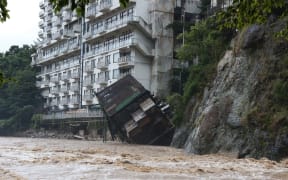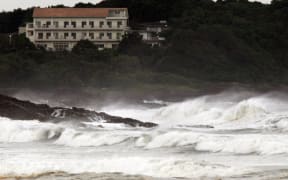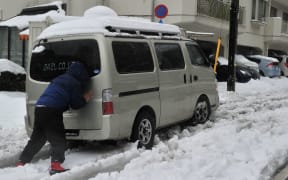Rescue work is continuing in Japan, where hundreds of people have been stranded by flooding and thousands of others told to leave their homes.
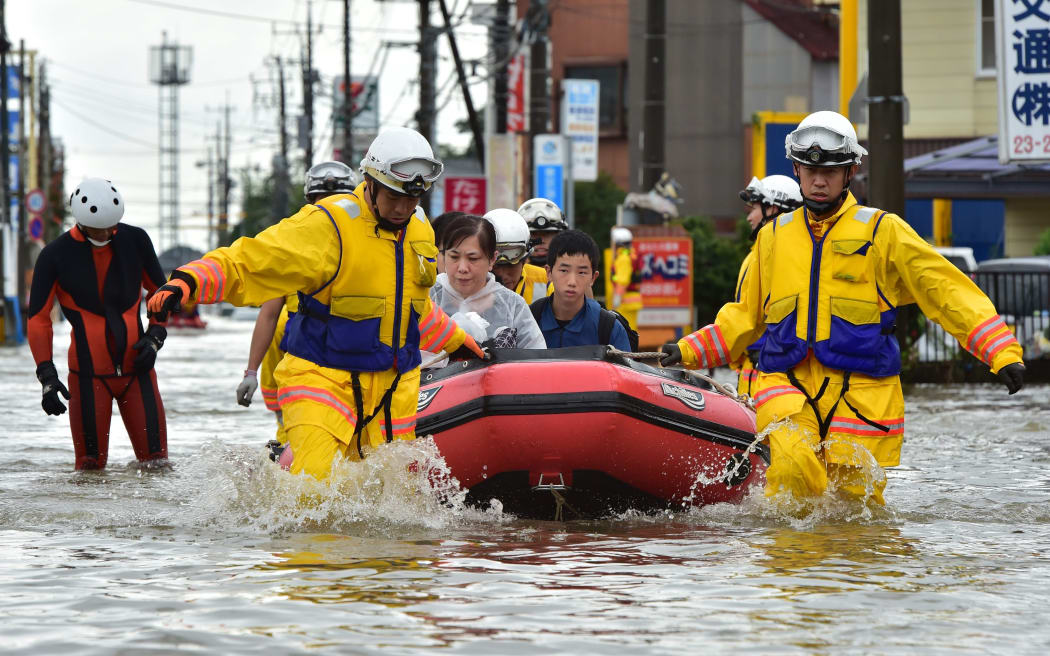
Rescue workers transport evacuees in a rubber boat through floodwaters. Photo: AFP
At least two people have been confirmed killed and 25 people are still missing across the regions worst hit - Ibaraki, Tochigi and Miyagi.
Many people had to wait overnight to be rescued from the roofs of their homes near the city of Joso, in Ibaraki, after the Kinugawa River burst its banks on Thursday.
Officials have warned of further heavy rain and the risk of mudslides.
An evacuation warning was also issued for 410,000 people in Sendai, the capital of Miyagi, on Friday morning, after the Nanakitagawa River swamped homes and fields.
The Shibui River in the mostly rural city of Osaki, about 350 kilometres north of Tokyo, also burst its banks on Friday morning, inundating rice fields and houses. Rescuers in boats and helicopters are rescuing stranded residents there.
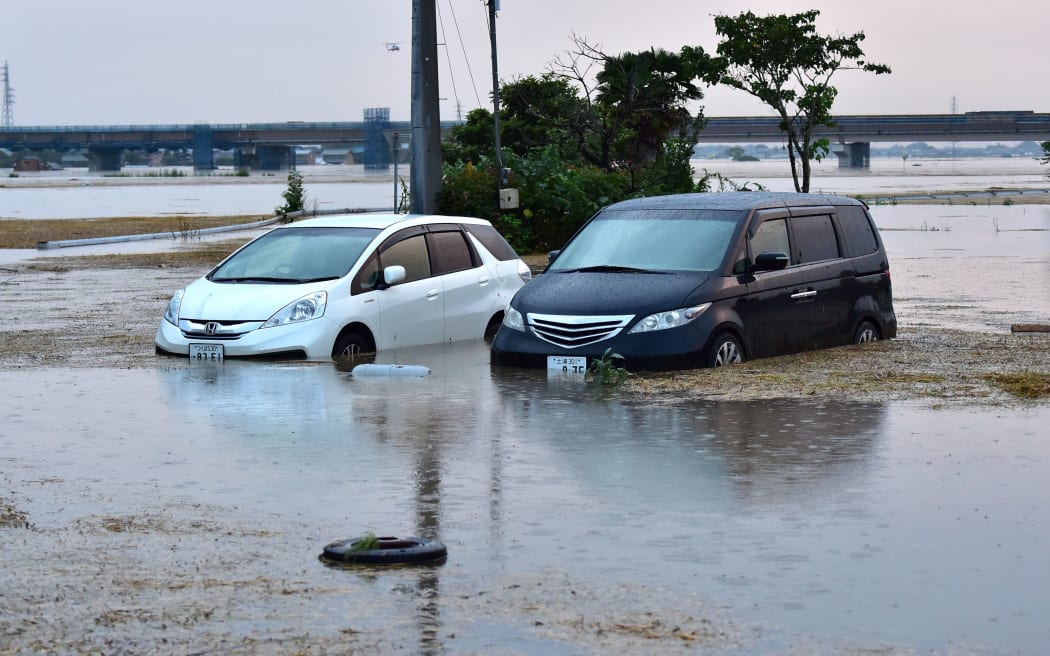
Submerged vehicles in floodwaters after an embankment of the Kinugawa river collapsed. Photo: AFP
The rainfall comes in the wake of Typhoon Etau, which ploughed through Japan earlier this week.
Some 51 helicopters and nearly 6000 rescuers worked through the night on Thursday.
Emergency crews in Joso have been plucking dozens of people from rooftops after waiting overnight. They were taken to an athletic field in the city, many carrying almost nothing with them. Some arrived without even shoes.
More than 3500 people have been taken to temporary shelters during the disaster.
Japan's public broadcaster NHK said that, in Joso alone, nearly 700 people were still stranded and waiting for help on Thursday evening.
Officials in the city of 60,000, about 50 kilometres northeast of Tokyo, said 22 people there had lost contact after requesting help. NHK reported that two eight-year-old children were believed to be among them.
Floodwaters had subsided somewhat by dawn on Friday, but much of the city was still underwater and it is not clear when evacuees will be able to return home.
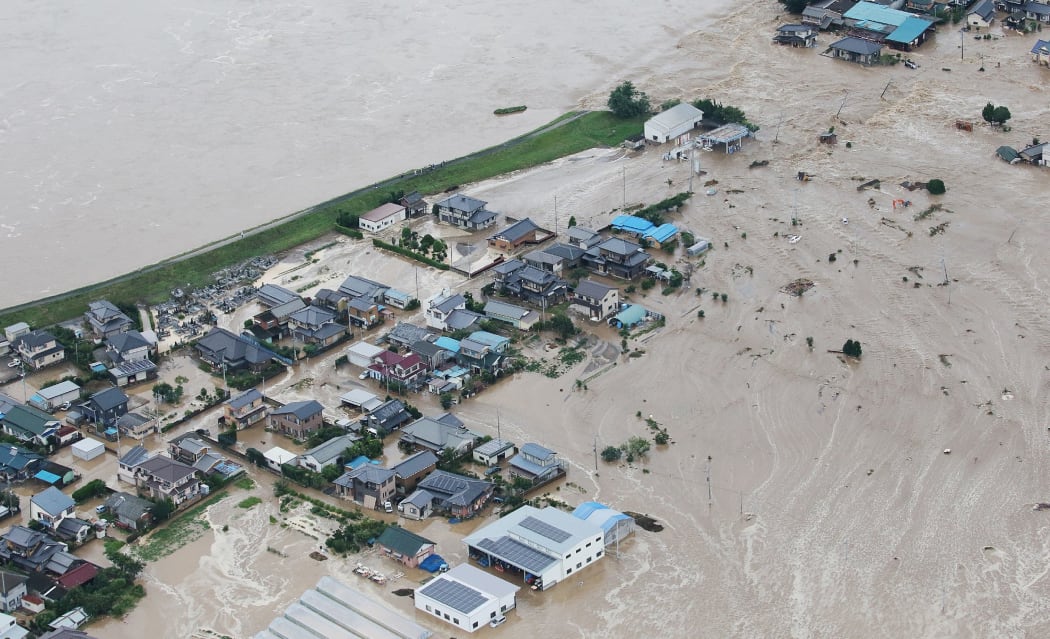
Floodwaters from the burst Kinugawa river flow into a residential area in Joso, Ibaraki. Photo: AFP
Across the affected region, one 63-year-old woman was killed after her house was hit by a landslide in Kanuma City in Tochigi.
A second woman, 48, was killed after her car was swept away in Kurihara city in Miyagi.
At least 27 people have been injured, eight seriously.
Sixty-two year old Hisako Sekimoto, who was rescued by military helicopter in the early morning, said she spent a sleepless night on the upper floor of her flooded house with her husband and three cats.
"There was no time to escape. All we could do was go upstairs. It was horrifying,'' she said. "I kept praying the water wouldn't come upstairs."
Akira Motokawa, a Joso evacuation official, told NHK that rescuers have been unable to keep up with the volume of calls for help.
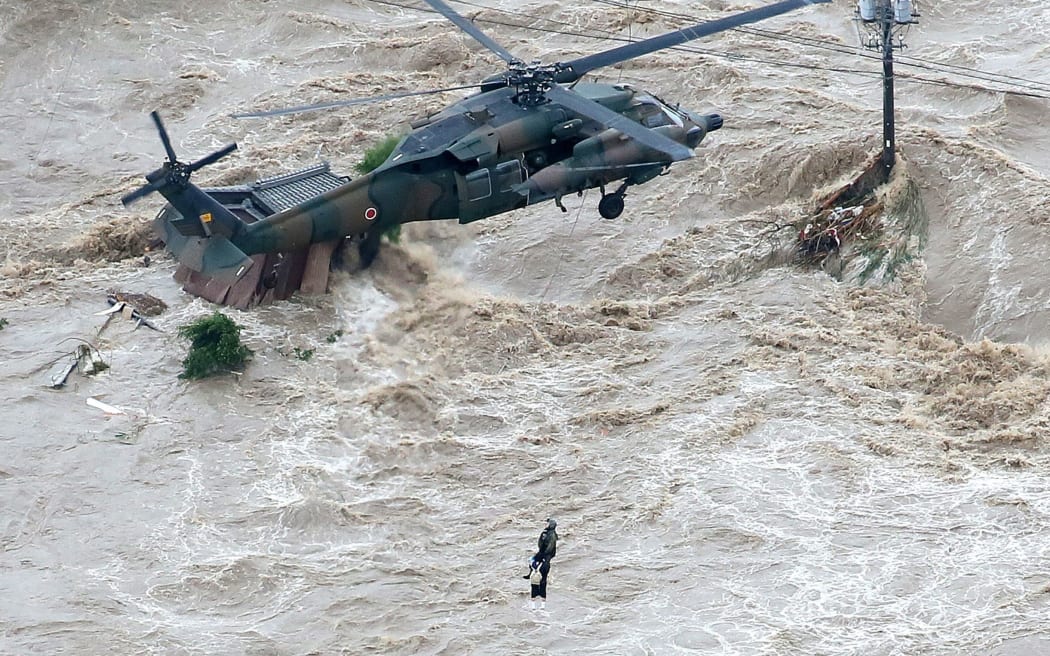
A local resident is rescued by a helicopter of the Gound Self Defense Force in a flooded area in Joso. Photo: AFP
The chief forecaster at the Japan Meteorological Agency (JMA), Takuya Deshimaru, has said the rainfall over the past few days was "unprecedented".
In Tochigi, more than 500 millimetres of rain fell in 24 hours in places, double the amount that normally falls there throughout the whole of September, according to NHK.
Parts of central Tochigi have seen almost 600 millimetres of rain since Monday evening, breaking records.
Many other areas of eastern and north-eastern Japan have also been issued weather warnings, including Fukushima, home to the still-damaged nuclear plant hit in the 2011 earthquake and tsunami.
The downpour overwhelmed the site's drainage pumps, a spokesman for operator Tokyo Electric Power said. Huge volumes of water, used to cool the plant's crippled reactors, are being stored at the site.
Prime Minister Shinzo Abe said the authorities were doing their best.
"The government will stand united and do its best to deal with the disaster... by putting its highest priority on people's lives," he told reporters.
Japan has emphasised disaster prevention since the 2011 earthquake and tsunami that killed nearly 20,000 people.
Authorities have been keen to avoid the criticism they faced at the time for what was seen as a sluggish response.
- BBC
